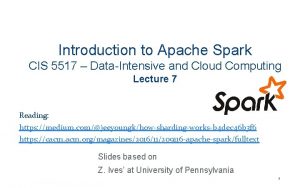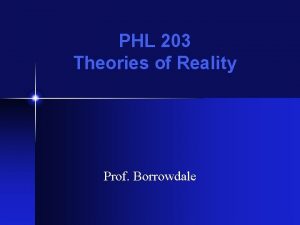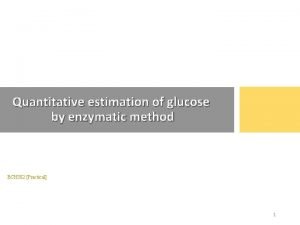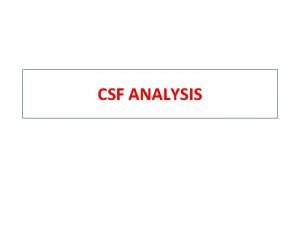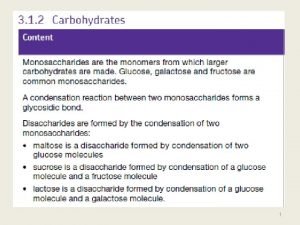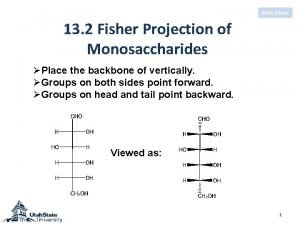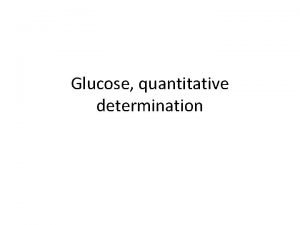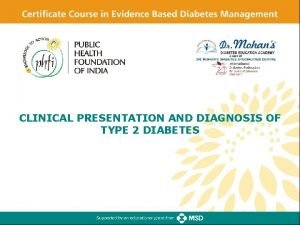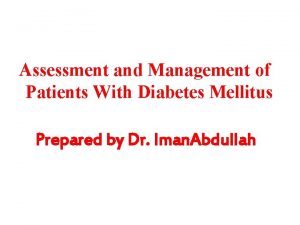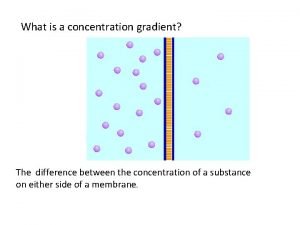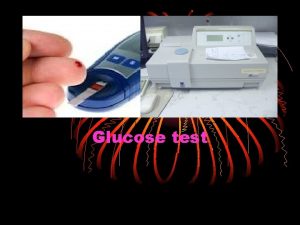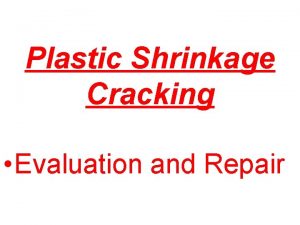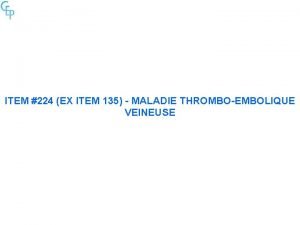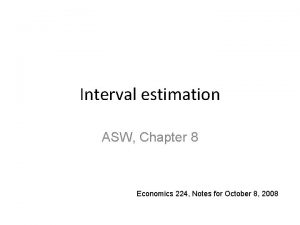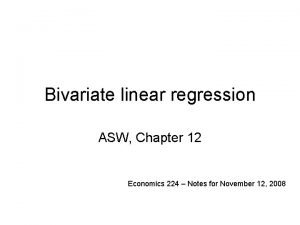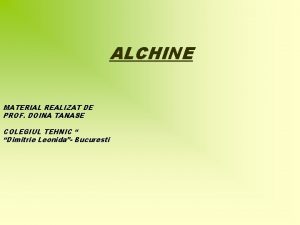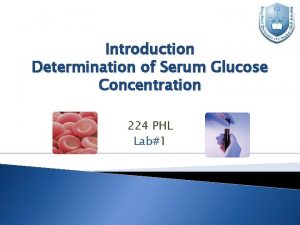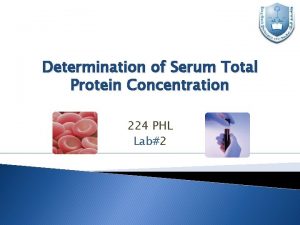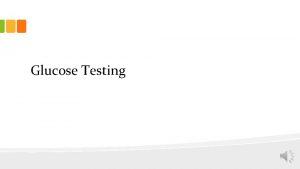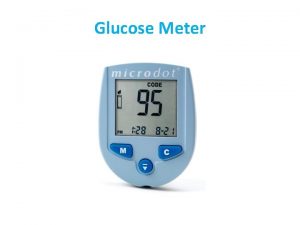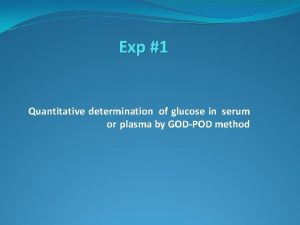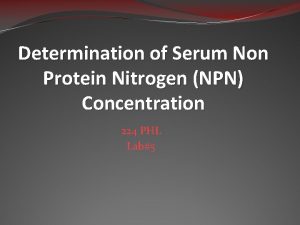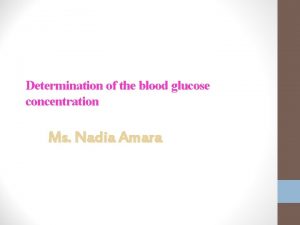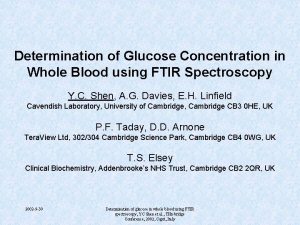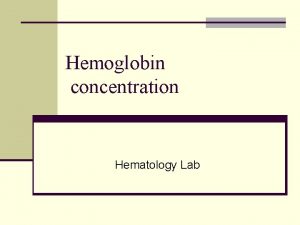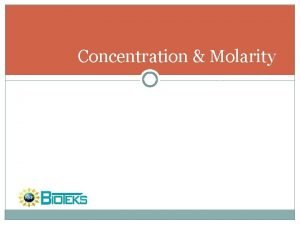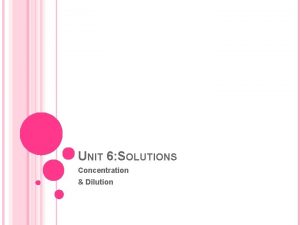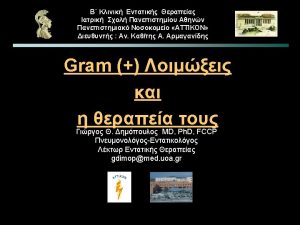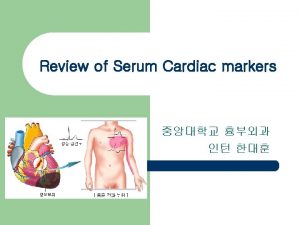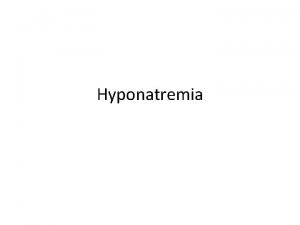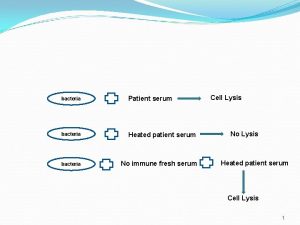Introduction Determination of Serum Glucose Concentration 224 PHL




















- Slides: 20

Introduction Determination of Serum Glucose Concentration 224 PHL Lab#1

Introduction Chemical method for a qualitative purposes “ to identify the presence or absence of a substance” Colorimetric method for a quantitative purposes “ to measure the concentration of a substance” Types of biochemical experiments

Instrument used in Colorimetric method: Spectrophotometer

Types of Specimens used in the laboratory experiments: � Blood � Urine � Cerebrospinal � Saliva fluid (CSF)

Factors affects the results and validity of the specimen: � Diet. � Drugs.

BLOOD Analysis � Blood is a tissue that circulates in the closed system of blood vessels.

Functions of Blood � Respiration. � Nutrition. � Excretion of waste products. � Defense mechanisms. � Regulation of body water. � Regulation of acid base balance. � Regulation of body temperature.

Compositions of Blood : Blood Cellular elements RBCs, WBCs, Platelets Plasma Water Solids Diffusible constituents Anabolic Catabolic Non diffusible constituents e. g. albumin, globulin, fibrinogen.


Purpose of blood analysis: 1) Diagnostic. 2) Prognostic (investigation).

Preparation of plasma and serum samples: � If whole blood is allowed to clot and the clot is removed, the remaining fluid is called Serum. � Serum = Plasma – Blood clotting factor.

Anti-coagulants : 1. Heparin: Mode of action: Anti –thrombin i. e. : prevents the conversion of prothrombin to thrombin. 2. E. D. T. A : Mode of action: Binds to Ca++ 3. Oxalates: Mode of action: Forms insoluble salts with Ca++ 4. Na Fluoride: (enzyme poison) It inhibits glycolysis; therefore it is used in determination of blood sugar. It inhibits urease enzyme, therefore it is not used in determination of blood urea. 5. Tri Na Citrate: To determine E. S. R 6. Acid Citrate Dextrose Solution: Used mainly to study platelets and to preserve blood.

Deproteinization : Purpose of deproteinization is to precipitate the proteins. This is necessary because: � proteins have a certain U-V absorption and could give false reading. � Proteins are colloids which make the solution turbid and difficult to read on the spectrophotometer.

Deproteinization Agents : 1. Trichloroacetic Acid &Tungestic Acid � Mode of action: Proteins at a p. H lower than their isoelectric p. H become cations and are precipitated as insoluble salts of the acids. 2. Zinc Hydroxide � Mode of action: Proteins at a p. H higher than their isoelectric p. H become anions and are precipitated as salts of the heavy metals. 3. Organic Substance : remove water and extract some blood constituents e. g. ethanol, ether precipitate proteins and extract fat and cholesterol.

Determination of Serum Glucose Concentration Serum glucose is determined by two methods : � Oxidation method (Enzymatic method). � Alkaline copper reduction method (Asatoor and King method).

Determination of Serum Glucose Concentration (Oxidation method) Principle: � Glucose H 2 O 2 � 2 H 2 O 2 + H 2 O Glucose oxidase gluconic acid + + phenol + amino-4 -antipyrine quinoneimine + 4 H 2 O Peroxidase

Procedure: Sample Standard Blank Serum 0. 1 ml - - Standard - 0. 1 ml - Working reagent 1 ml 1 - Bring two dried test tubes (sample & standard). 2 - Incubate for 10 minutes at 37ºC in water bath. 3 - Measure the absorbance for the sample & standard against blank at ℷ= 546 nm.

Calculation: Standard × Concentration (100 mg/dl) Absorbance (standard) Serum glucose (mg/dl)= Absorbance (sample) Normal value: 75 – 110 mg/dl

Clinical significance: Hyperglycemia is blood glucose level › 110 mg/dl Hypoglycemia is blood glucose level ‹ 75 mg/dl Causes: 1. Diabetes mellitus. 2. Hyperactivity of thyroid, adrenal, pituitary gland. 3. ↑secretion of GH (Acromegaly) 4. Asphyxia causing acidosis and increased mobilization of glucose from glycogen in the liver. 5. Exercise or stress causing increased secretion of adrenaline. 6. Pancreatic carcinoma or acute pancreatitis. Causes: 1. Overdose of insulin. 2. Hypoactivity of thyroid, adrenal, or pituitary gland. 3. Glycogen storage disease in which there is deficiency of G 6 P → inability to produce glucose from glycogen.

Renal Glucose Threshold : � Normally glucose present in the blood is filtered out in the renal glomeruli but reabsorbed back into the blood by the kidney tubules. � The limit to the ability of the tubules to reabsorb glucose is 180 mg/ dl. � If blood sugar level rises above this value glucose appears in the urine (Glucosurea). The blood glucose level of 180 mg/dl is therefore called the renal glucose threshold.
 Phl to rdd
Phl to rdd Phl moodle
Phl moodle Quantitative estimation of glucose by which method
Quantitative estimation of glucose by which method Glucose in csf
Glucose in csf Difference between alpha and beta glucose
Difference between alpha and beta glucose God pod test procedure
God pod test procedure D-psicose fischer projection
D-psicose fischer projection Kanika ghai
Kanika ghai Fasting plasma glucose concentration
Fasting plasma glucose concentration Fasting plasma glucose concentration
Fasting plasma glucose concentration Diabetes mellitus definition
Diabetes mellitus definition Whats concentration gradient
Whats concentration gradient Movement of high concentration to low concentration
Movement of high concentration to low concentration Introduced by
Introduced by Plastic shrinkage cracking repair
Plastic shrinkage cracking repair Edu 224
Edu 224 Embolie pulmonaire item
Embolie pulmonaire item Asw 224
Asw 224 Seal ring vlsi
Seal ring vlsi Bivariate linear regression
Bivariate linear regression Acetilena la 600-800 grade
Acetilena la 600-800 grade
